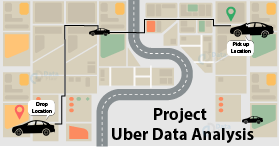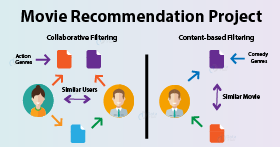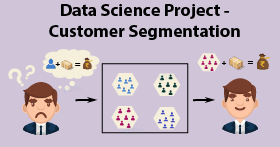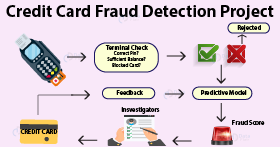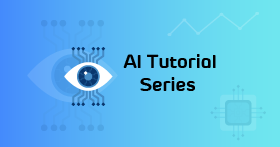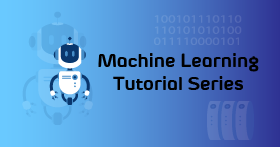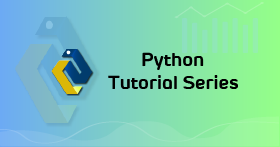Master Data Science: Get Ahead in Your Career with This Comprehensive Tutorial
Learn Data Science from Scratch and Become a Pro with our FREE tutorials, practicals, case studies, interview questions and real-time projects!
Dive into a world of endless possibilities as you learn to harness the power of data to uncover hidden insights and make data-driven decisions. From predicting trends to uncovering patterns, data science has the power to transform the way we live and work. Whether you’re an absolute beginner or an experienced professional, our Data Science tutorial will take you on a journey to explore the exciting world of data analysis, visualization, and machine learning. Get ready to uncover the future with Data Science.
What is Data Science?
Data Science uses scientific methods, statistics, and machine learning algorithms to solve problems by extracting knowledge and insights from the data. It helps business in taking the right decisions at right point of time; it also helps in strategic planning.
Data Science consists of a pool of operations encompassing AI, data mining and big data to utilize powerful hardware, programming system and efficient algorithms to solve problems.
Start Learning Data Science
Check out these Data Science Tutorials and step up for becoming the next Data Scientist. Choose where to begin, learn at your own pace:
Beginner
- What is Data Science?
- Data Science for Beginners
- Data Science Skills
- Data Science Process
- Data Science Programming Languages
- Why Learn Data Science?
- Is Data Science Difficult to Learn?
- Data Science Prerequisites
- Top Data Science Skills
- Data Science Portfolio
- Data Science Projects with Source Code
- Data Science Projects Ideas
- Data Science Use Cases
- Pros and Cons of Data Science
- Future of Data Science
- Career in Data Science
- Transfer Learning for Deep Learning
Intermediate
- Purpose of Data Science
- Data Science Books
- Best Data Science Books
- How to Become a Data Scientist Infographic
- Steps to Become a Data Scientist
- Become Data Scientist without a Degree
- Skills Needed to Become a Data Scientist
- Why hire a Data Scientist for team?
- Data Science Job Trends
- Unlock the Jobs in Data Science Career
- Top Data Science Jobs
- Get Your First Job in Data Science
- Scope of Data Science in India
- Data Science Certifications
- Data Scientist Salary in India
- NLP in Data Science
- Data Science Case Studies
Comparison
- Data Science vs Data Analytics Infographic
- Data Scientist vs Data Analyst
- Data Scientist vs Business Analyst
- Big Data vs Data Science
- Data Science vs Artificial Intelligence
- Business Intelligence vs Data Science
- Machine Learning vs Data Science
- Data Scientist vs Data Engineer vs Data Analyst
- R vs Python for Data Science
Data Science Application
- Data Science Applications
- Data Science in Banking
- Data Science in Education
- Data Science in Finance
- Data Science in Healthcare
- Data Science for Business
- Data Science in Retail
- Data Science in Agriculture
- Data Science for Weather Prediction
- Data Science at Netflix
- Data Science at Flipkart?
- Data Science at Twitter
- Data Science at Movies
- Data Science at Facebook
- Data Science in Digital Marketing
Implement your Python learning and step into the world of Data Science
- Learn Python for Data Science
- Mastering Python for Data Science
- Data Science with Python
- Python Data Science Environment Setup
- Data Operations and Data Cleansing
- Processing CSV, JSON, and XLS data
- Python Relational databases
- Python NoSQL databases
- Stemming and Lemmatization
- Data Wrangling and Aggregation
- Python Matplotlib
- Box Plots and Scatter Plots
- Bubble Charts and 3D Charts
- Python Heatmaps
- Histograms and Bar Plots
- Geographical Data and Graph Data
- Time Series Analysis
- Central Tendency and Variance
- Normal, Binomial, Poisson, Bernoulli Distributions
- p-Value and Correlation
- chi-Square Test and Linear Regression
Implement your Data Science learning and step into the world of R Programming
- R Nonlinear Regression Analysis
- R Decision Trees
- Cluster Analysis with R
- Graphical Models in R
- Top Real-World Graphical Models Applications
- SVM Training and Testing Models in R with e1071
- Bayesian Networks with R
- Bayesian Methods with R
- Top 10 Real-World Bayesian Network Applications
- R- Predictive and Descriptive Analytics
- Normal Distribution in R – Basic Probability distribution
- R Cluster Analysis
- Data Visualization in R
- Classification in R
- Chi-Square Test in R
- Bar Charts in R | Histogram in R
- Top 10 Data Analytic Tools
Learn the importance of Python for Data Science
- Python Data Science Introduction
- Python Data Science Environment Setup
- Python Matplotlib
- Data Operations and Data Cleansing
- Processing CSV, JSON, and XLS data
- Python Relational Databases
- Python NoSQL Databases
- Stemming and Lemmatization
- Data Wrangling and Aggregation
- Box Plot and Scatter Plot with Python
- Bubble Chart and 3D Charts in Python
- Geographical and Graph Data in Python
- Python Time Series Evaluation
- Measuring Central Tendency and Variance
- Normal, Binomial, Poisson, Bernoulli Distributions
- p-value and Correlation
- Chi-Square Test and Linear Regression
- Heat Maps with Python
- Histograms and Bar Plots with Python
Master your Data Science skills with SAS
- Special & Built-in Data Sets in SAS
- Entering and Reading Raw Data in SAS
- Writing Raw Data in SAS – PROC Export & CSV file
- Merging Datasets in SAS
- SAS Concatenate Data Sets with Set Statement
- SAS SQL – PROC SQL SAS
- SAS Proc Sort Data Sets
- SAS Formats- Built-in & User-Defined
- Splitting and Subsetting Datasets in SAS
- SAS Histogram Statement With UNIVARIATE Procedure
- SAS Bar Charts – Simple, Stacked & Clustered
- SAS Pie Charts | Types of Pie Charts
- SAS ODS (Output Delivery Systems)
- SAS Boxplots – PROC SGPANEL, SGPLOT & Types
- SAS Scatter Plots & Types
- SAS Correlation Analysis- PROC CORR & Correlation Matrix

Crack Your Next Data Science Interview
Want to make it through the next interview you will appear for? Hone your skills with our three-part series of Data Science interview questions widely asked in the industry. With basic to advanced questions of Data Science, this is a great way to expand your repertoire and boost your confidence.
Exploring the Data Science Language
Let’s take a look at some facts about Data Science and its philosophies.
Our Data Science Tutorial is a comprehensive program designed to help individuals of all skill levels master the technology.
The tutorial includes a step-by-step guide covering everything from the basics to advanced concepts, interactive quizzes, coding exercises, expert instructions, real-time projects and access to an online platform to learn on your own schedule.
The tutorial is suitable for complete beginners or those looking to advance their existing knowledge. It will give learners the skills and knowledge to analyze, visualize and make predictions from data and be able to work on real-world projects. It will also introduce the participant to various data science techniques and the most popular data science algorithms.

William S. Cleveland
Data Scientist Roles & Responsibilities
- Understand the problem and gather relevant data
- Clean and preprocess the data
- Explore and visualize the data to gain insights
- Select and apply appropriate models and algorithms
- Evaluate the performance of the models and make improvements as necessary
- Communicate the results and findings to stakeholders
- Deploy the solution in a production environment
- Monitor and maintain the solution over time.
How to Become a Data Scientist?
- Learn the basics of programming languages such as Python or R, which are commonly used in data science
- Familiarize yourself with common libraries and frameworks for data analysis, such as pandas, numpy, scikit-learn, and TensorFlow
- Understand the concepts of statistics, probability, and linear algebra, which are foundational for many data science techniques
- Learn about machine learning concepts such as supervised and unsupervised learning, and various algorithms such as linear regression, decision trees, and neural networks
- Practice working with different types of data, such as structured and unstructured data, and different file formats such as CSV, JSON, and SQL databases
- Learn how to use tools for data visualization, such as matplotlib, seaborn, and ggplot
- Understand the importance of data ethics and how to handle sensitive information properly
- Stay up to date with the latest developments and trends in the field, such as big data, deep learning, and artificial intelligence.
Why Should You Learn Data Science?
- Career Opportunities: As data becomes new oil and increasingly important in decision-making, the demand for data scientists continues to grow, making it a highly sought-after skill in the job market.
- Versatility: Data science can be applied in various industries, such as finance, healthcare, marketing, and more, giving you flexibility in your career path.
- Problem-solving: Data science allows you to take big complex problems and break them into smaller manageable pieces, then use data to find solutions.
- Impact: The insights and predictions that come from data science can significantly impact an organization’s bottom line and improve people’s lives.
- Advancement in technology: With the rapid advancement in technology, the ability to collect and store data has increased, making data science an exciting field with a lot of potential for innovation.
- Personal growth: Learning data science can help you develop valuable skills such as programming, statistics, and critical thinking, which can be applied to any field.
Additionally, data science can be very rewarding for professionals who enjoy using their creativity and problem-solving skills to find solutions and make discoveries.
With the ability to work with large amounts of data, data scientists can uncover hidden insights and uncover new patterns and reports that can be used to improve the business.
In short, learning data science can help you develop valuable skills, open up career opportunities, and have a real impact in the world. It’s a challenging and rewarding field that can offer a lot of personal and professional growth.
Data Science Tools:
- Python: A popular programming language used for data science due to its extensive data manipulation and visualization libraries, such as Pandas and Matplotlib.
- R: Another popular programming language used for data science and statistical analysis, with libraries such as dplyr and ggplot2.
- SQL: A programming language used for managing and querying relational databases.
- Jupyter Notebook: An open-source web application that allows for interactive data analysis and visualization.
- Hadoop: A distributed framework for storage and processing of large volumes of data.
- Spark: Lightening fast distributed computing system for large-scale data processing.
- Tableau: BI tool that creates interactive and visually appealing charts, graphs, and maps.
- SAS: A software suite for data management and statistical analysis commonly used in business and government.
- RapidMiner: An open-source data science platform that provides a user-friendly interface for data preparation, modelling, and deployment.
- KNIME: An open-source data analytics platform that offers a wide range of data integration, transformation, and modelling tools.
